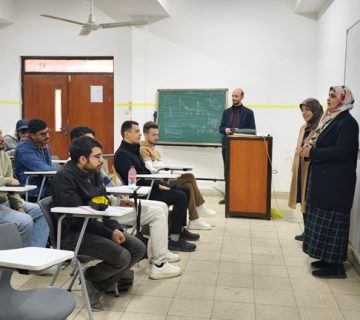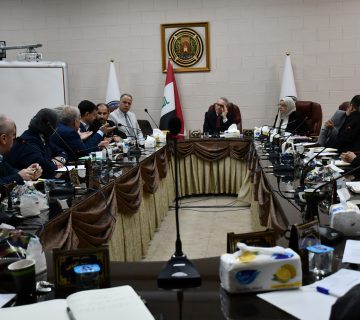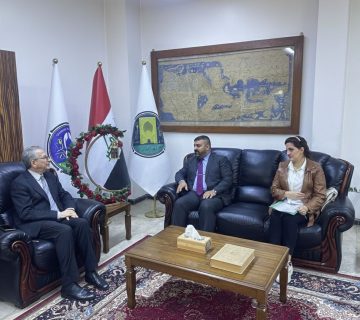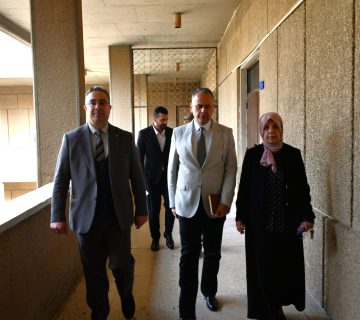“Evaluation the applicability of Artificial Neural Network for predicting Water Quality Index along Tigris River”
After discussing the student, listening to his defense, and evaluating the level of the thesis, the student was granted a master’s degree in Water Resources Engineering – Water Resources. With Very Good
The discussion committee was consisted by the following:
Prof. Dr. Haider Abdul Ameer Khudheir ————————– Chairman
Asst. Prof. Dr. Safa’a Khudheir Hashim ———————– Membership
Asst. Prof. Dr. Ali Omran Muhsin———————————- Membership
Lec. Dr. Mohammed Rashid Dhaher. ——————————- Supervisor
The Thesis Abstract as : –
Water is crucial for human existence, ecosystem security, energy generation, food production, economic and social growth, and climate change adaptation. Iraq’s water resources face a number of difficulties, the most significant of which is the absence of units to treat sanitary drainage to avoid river contamination, a lack of rationalization in water usage, a lack of use of modern irrigation techniques, and changes in the weather. One of the sustainable development objectives established by the United Nations to encourage human well-being includes ensuring the availability of high-quality water resources. The objective of this study is to evaluate the water quality of the Tigris River from its entry into Iraqi land in the Fishkhabour region until it joins the Euphrates River in the Qurnah district, using three water quality indicators: the Canadian index, the Horton index, and the NSF index. Seven different locations along the Tigris River were chosen, including fourteen stations between 2010 and 2022 at Fishkhabour, Mosul Dam, Mosul, Samarra Barrage, Tarmiyah, Tigris Arm, Muthanna Bridge, Shuhada Bridge, Saray Baghdad, Azizziyah, Kut Barrage, Amarah, Ali Garbi, and Qurnah. Twelve physical, chemical, and biological parameters were examined monthly during the Wet and Dry seasons to assess the Tigris River’s water quality. These parameters include PH, calcium Ca+2, magnesium Mg+2, sodium Na+, potassium K+, chloride Cl-, sulfate SO4+2, bicarbonate HCO3-, nitrate NO3-, total dissolved solid TDS, electric conductivity EC, and biochemical oxygen demand BOD5. According to the results of the three indicators, the Tigris River’s water quality enters Iraqi land in good condition, and then declines towards the capital, Baghdad, to the city of Basra in southern Iraq, where the water quality deteriorates to become bad, particularly at the confluence of the Tigris and Euphrates rivers in the city of Qurnah. Therefore, it is necessary to control pollution sources through the creation of a database to monitor changes in water quality, the adoption of strategies and general policies for the improvement and management of water resources, the development of wastewater services, and the encouragement of local communities’ involvement in the preservation of natural resources.
The Main Objectives for this Thesis are:
1-Evaluating the type and quantity of the chemical and biological parameters of the Tigris River to see whether they meet or exceed the permitted natural limits that are suitable for drinking in particular, or contribute to pollution.
2-Identifying the factors that contribute to the contamination of the Tigris River and arriving at specific conclusions about the causes, locations, and treatments for the pollution.
3-Developing an ANN model for the water quality parameters using the data for the years that they are available and applying it to predict the river’s water quality index for the missing years.








